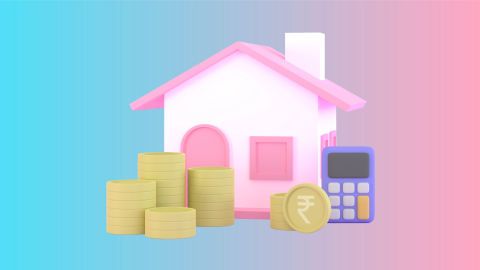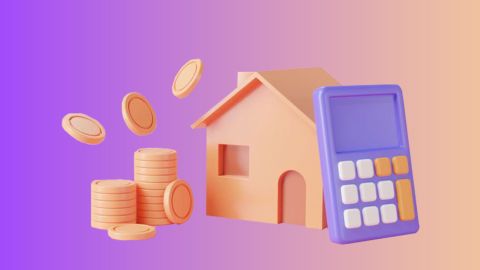In the realm of real estate, navigating the complexities of home loan EMIs for under-construction properties resembles embarking on a journey with numerous twists and turns. Unlike ready-to-move-in properties, loan repayment dynamics evolve alongside construction progress, demanding a nuanced understanding of when and how EMIs commence.
With Bajaj Housing Finance Home Loan serving as a reliable financial partner, individuals exploring homeownership in this context must grasp the intricacies of tailored loan structures. From managing pre-EMI phases to full EMI payments post-possession, these structures ensure a seamless transition from construction to occupancy, shaping the trajectory of one's homeownership journey significantly.
When does EMI start for home loans on under-construction property?
The commencement of home loans EMIs for under-construction properties differ from ready-to-move-in properties. Typically, EMIs commence post-full disbursement of the loan amount, which happens after the property is complete and possession is handed over to the buyer. However, there's a provision for partial disbursement during the construction phase, leading to a concept called pre-EMI.
Key Factors Affecting the Start of EMI for Under-Construction Properties
Several factors influence the start date of EMIs for under-construction properties:
- Construction progress: The pace of construction determines when the developer requests funds from the lender, impacting the EMI start date.
- Loan disbursement schedule: The lender disburses funds based on the project's construction milestones, affecting the timing of EMIs.
- Builder reputation: Delays in construction by the builder can postpone possession and subsequently delay the start of full EMIs.
- Regulatory compliance: Adherence to regulatory approvals and clearances influences project timelines, thereby impacting EMI commencement.
Difference between pre-EMI and full EMI for under-construction property
Pre-EMI is the interest paid on the disbursed loan amount during the construction phase, while full EMI comprises both principal and interest components after complete disbursement. Pre-EMI payments are usually lower and only cover the interest portion, providing temporary relief until full disbursement.
Managing EMI for under-construction property: Tips and strategies
To effectively manage EMIs for under-construction properties, consider these strategies:
- Budget planning: Factor in potential delays and additional expenses during construction when planning your budget.
- Emergency fund: Maintain an emergency fund to cover unexpected expenses and EMI payments during construction delays.
- Regular updates: Stay informed about the project's progress through regular updates from the developer or builder.
- Loan repayment options: Explore flexible loan repayment options offered by lenders to manage EMI fluctuations.
Benefits of pre-EMI for under-construction property
Pre-EMI offers several benefits to homebuyers:
- Lower initial payments: Pre-EMI payments are typically lower than full EMIs, easing the financial burden during the construction phase.
- Tax benefits: Interest paid during the construction period is eligible for tax deduction under Section 24 of the Income Tax Act, providing some relief to homebuyers.
Risks of pre-EMI for under-construction property
While pre-EMI provides temporary financial relief, it comes with its own set of risks:
- Higher interest burden: Pre-EMI payments only cover the interest portion, resulting in a higher overall interest burden compared to full EMIs over the loan tenure.
- Dependency on developer: Delays in construction or project completion can prolong pre-EMI payment periods, increasing the overall cost for the homebuyer.
Financial planning for home loans on under-construction properties
Effective financial planning is essential when opting for home loans on under-construction properties.
- Assess affordability: Evaluate your financial situation and assess the affordability of EMIs, considering potential delays and fluctuations.
- Emergency fund allocation: Set aside funds to cover unforeseen expenses and EMI payments during construction delays.
- Loan tenure: Opt for a loan tenure that aligns with your financial goals and ensures manageable EMIs.
Consider Bajaj Housing Finance Home Loan
In the realm of under-construction properties, home loans serve as the cornerstone of financial support for aspiring homeowners. Bajaj Housing Finance provides beneficial home loans tailored to suit the specific needs of individuals navigating the complexities of EMIs for properties under construction. Bajaj Housing Finance Home Loans offer various benefits to their customers, such as:
- Flexible repayment plans: Enjoy the convenience of extended repayment tenures of up to 32 years, making loan repayment hassle-free. Select a repayment plan that fits seamlessly with your financial circumstances, allowing you to manage your loan obligations effectively.
- Attractive interest rates: Our home loans feature competitive interest rates starting at 7.99%* p.a., ensuring affordability and manageability. With EMIs as low as Rs. 722/lakh*, realising your dream of owning a home is within easy reach.
- Tailored loan solutions: Customise your home loan to suit your unique requirements with our personalised options. Whether it's choosing the loan amount, or repayment tenure, you have the power to shape your homeownership journey according to your preferences.
- Access to additional finance with the top-up loan facility: Take advantage of our home loan balance transfer facility and unlock a top-up loan of Rs. 1 crore* or higher. Utilise this additional finance for home renovations, repairs, or expansions with minimal documentation and attractive interest rates.
Navigating the landscape of home loan EMIs for under-construction properties requires a comprehensive understanding of the intricacies involved. From the commencement of EMIs based on construction progress to managing pre-EMI phases and full EMI payments, prospective homeowners must navigate through various factors. While pre-EMI offers temporary financial relief, it's essential to weigh its risks against the benefits. Effective financial planning and understanding lender policies are crucial in ensuring a smooth transition from construction to occupancy. With home loans from Bajaj Housing Finance, you can access flexible repayment plans, competitive interest rates, tailored loan solutions, and additional finance options, empowering you to achieve your dream of homeownership with confidence and ease.




